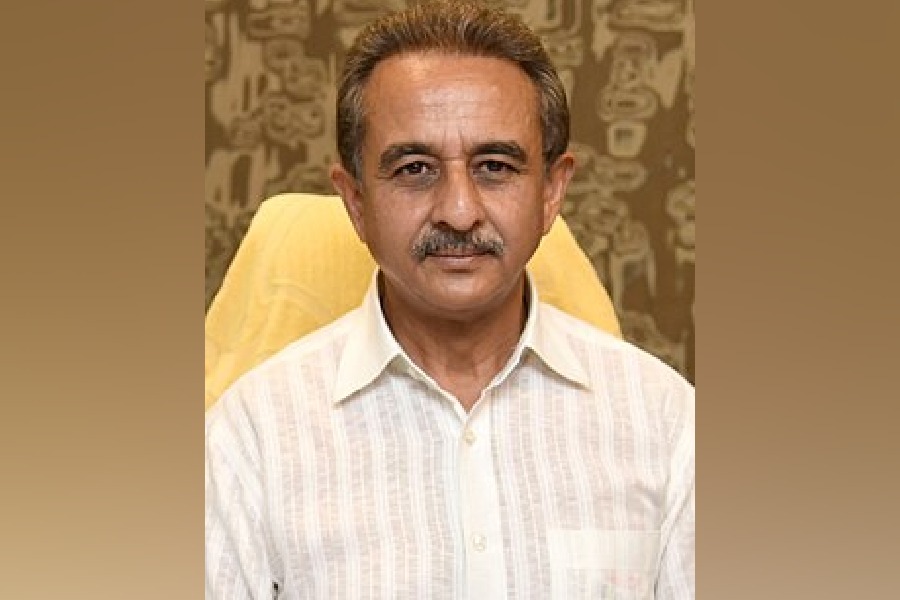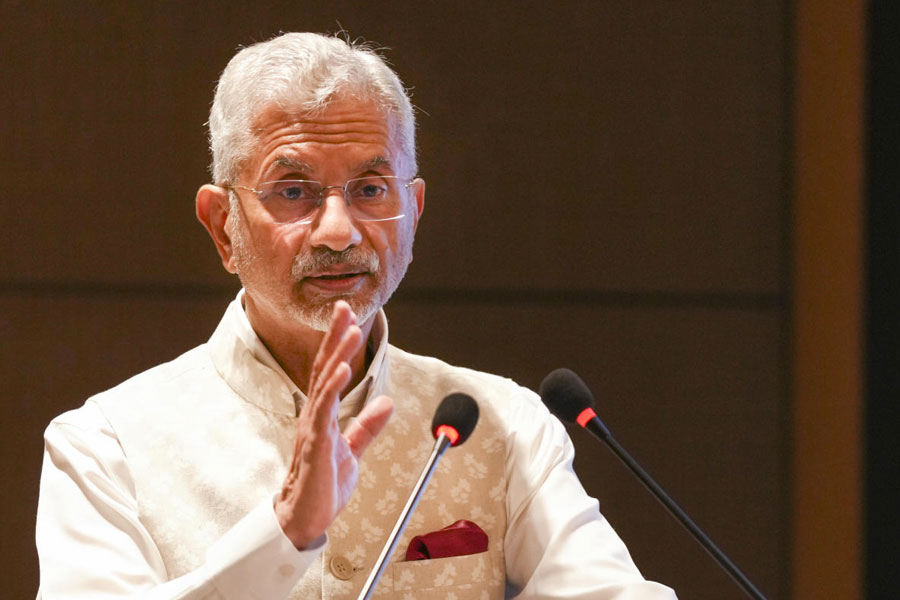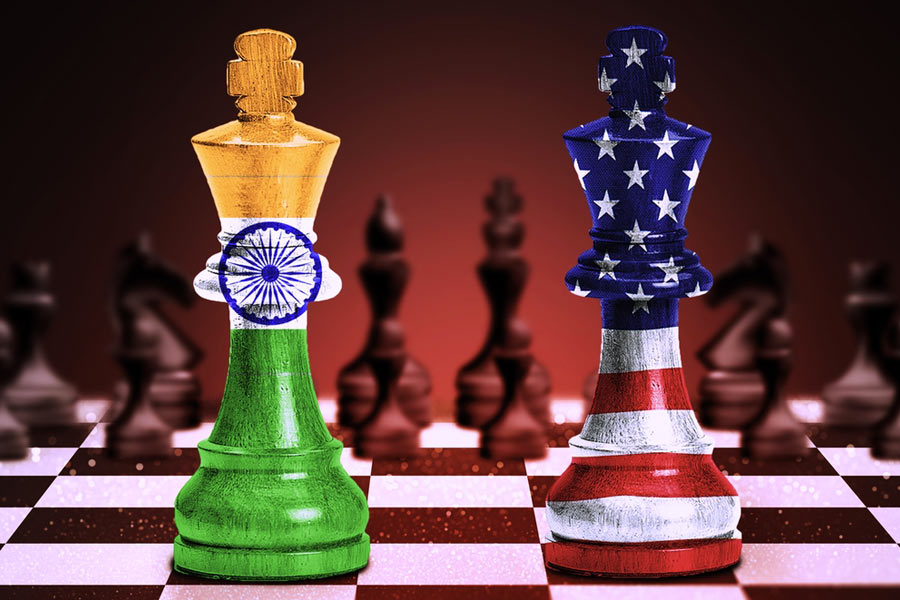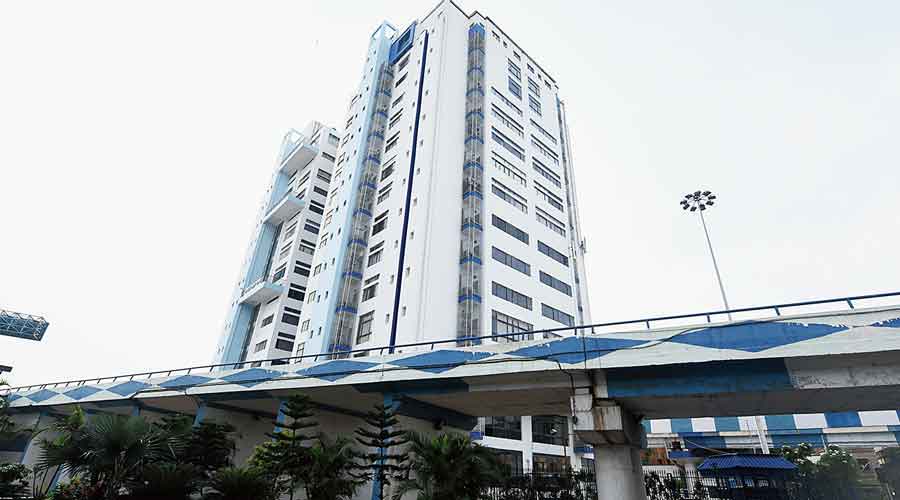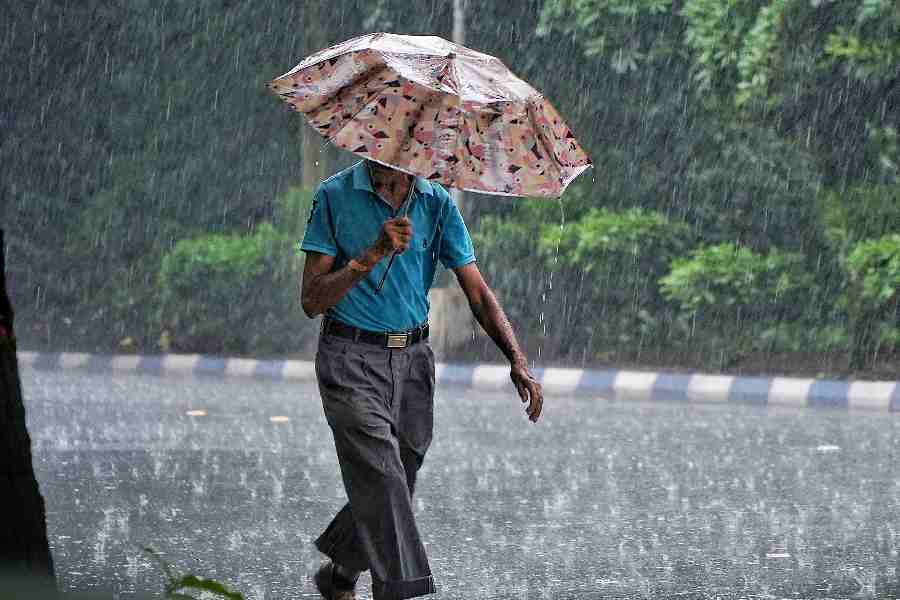 |
| The Tagore Villa |
When memories are shared or are retold they gradually build up the past from thin air, and what was once vague and insubstantial, takes on the three-dimensional form of reality. The memories of mother-in-law Tripta Haldar and daughter-in-law Champa Haldar reconstruct the past glories of the palace named Prasad, where a branch of the Tagore family still lives, and Tagore Villa, which was their garden house in Alambazar, where the latter spent a good part of her childhood as it belonged to her father, Purnendra Nath Tagore.
He was the eldest son of Prafulla Nath Tagore, who left this prime property, sold to the BSF in 1971 during the Naxalite upheaval, exclusively to him. Tripta used to be a regular at Prasad after her marriage as her husband, Niroj, was friend and cousin of Prabirendra Mohan Tagore of Prasad.
Prasad, says Tripta, was constructed on five bighas and was a saat mahala building, or a building with seven courtyards. During Durga puja a velvet curtain used to be hung in the thakurdalan to create a separate enclosure for the women of the family. There were about 15 of them, including members of the extended family, and each had a separate kosha kushi (a boat-like vessel and its smaller version in which holy water from the Ganga is kept during pujas) made of silver. Elaborate feasts were held during the festival and the poor were not deprived. During these festive days sit-down meals were held on the floor, when banana leaf plates and earthenware glasses were used.
When the occasion demanded, the dance hall on the first floor was turned into a banquet hall. The Nizam of Hyderabad, the king of Kashi and the queen of Baroda were among the guests that included European bigwigs. “The dance hall had windows surrounding the upper storey and we women would peep from above,” says Tripta.
Prasad had a mahal exclusively for dogs. They had a golden cocker spaniel, a dachshund and a German shepherd. “During the riots in Park Circus our family had taken refuge here,” recalls Tripta.
Emerald Bower on Barrackpore Trunk Road, she says, had two houses —for men and women, the latter with a pond attached. Travellers trees (panthapadap) were planted there. Its cast-iron gate, that cost Rs 20,000 then, was a smaller version of the one at Buckingham Palace. Permission was not granted to install a gate of a similar size as that of the London palace. Twenty to 25 gardeners used to look after the garden. Prabirendra’s father, Pradyot Kumar Tagore, lived here during summer and the finicky man that he was, all the windows of the house were covered with net to ward off mosquitoes. He would pad around the Emerald Bower house in a silk dhoti and silk socks.
The Maharaja, for that was his title, was a gourmet, and besides a Brahmin cook from Varanasi, he had cooks from Dhaka and Hyderabad as well. But he was a frugal eater. He would just dip a finger into each bowl and taste the dish.
Champa Haldar says that she and her two sisters and one brother moved into Tagore Villa close to Dakshineswar in 1952 after the death of her grandfather. Before that they lived at 1 Darpanarayan Street in Pathuriaghat. “This house had a wooden structure on top, and during the riots we used to climb on top to get a better look at the murder and mayhem. About 23 cousins lived in that house and we would set up a stage in the lawns. Beautiful chandeliers hung from the ceiling, some in red and green,” she says.
Tagore Villa on 112 bighas was as pretty as a picture with its extensive gardens. It had two houses, one for women known as Ranikuthi. Her father employed 100 gardeners. The three ponds were connected by bridges. The three-storeyed house had a dance floor on the first floor that had four seating arrangements and was adorned with double-petal chandeliers. The girls would go to school near Park Street by train. The house had a lift. Then one day part of the terrace and a turret collapsed.
“Whenever parties were thrown we used to see the goings-on through air shafts on top. We used to go for boat rides from the ghat,” says Champa.
Her father was a barrister and he looked after the property of other members of the family as well. Then the Naxalite movement shattered the dream world.
(Concluded)


